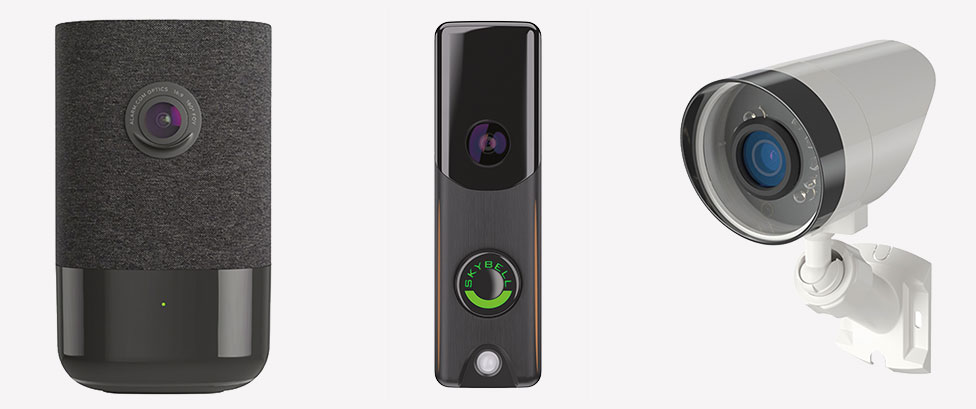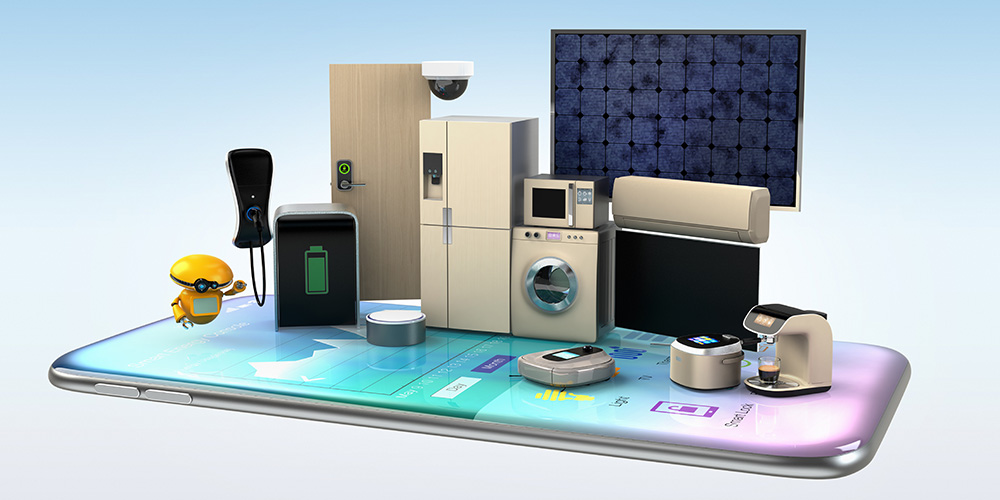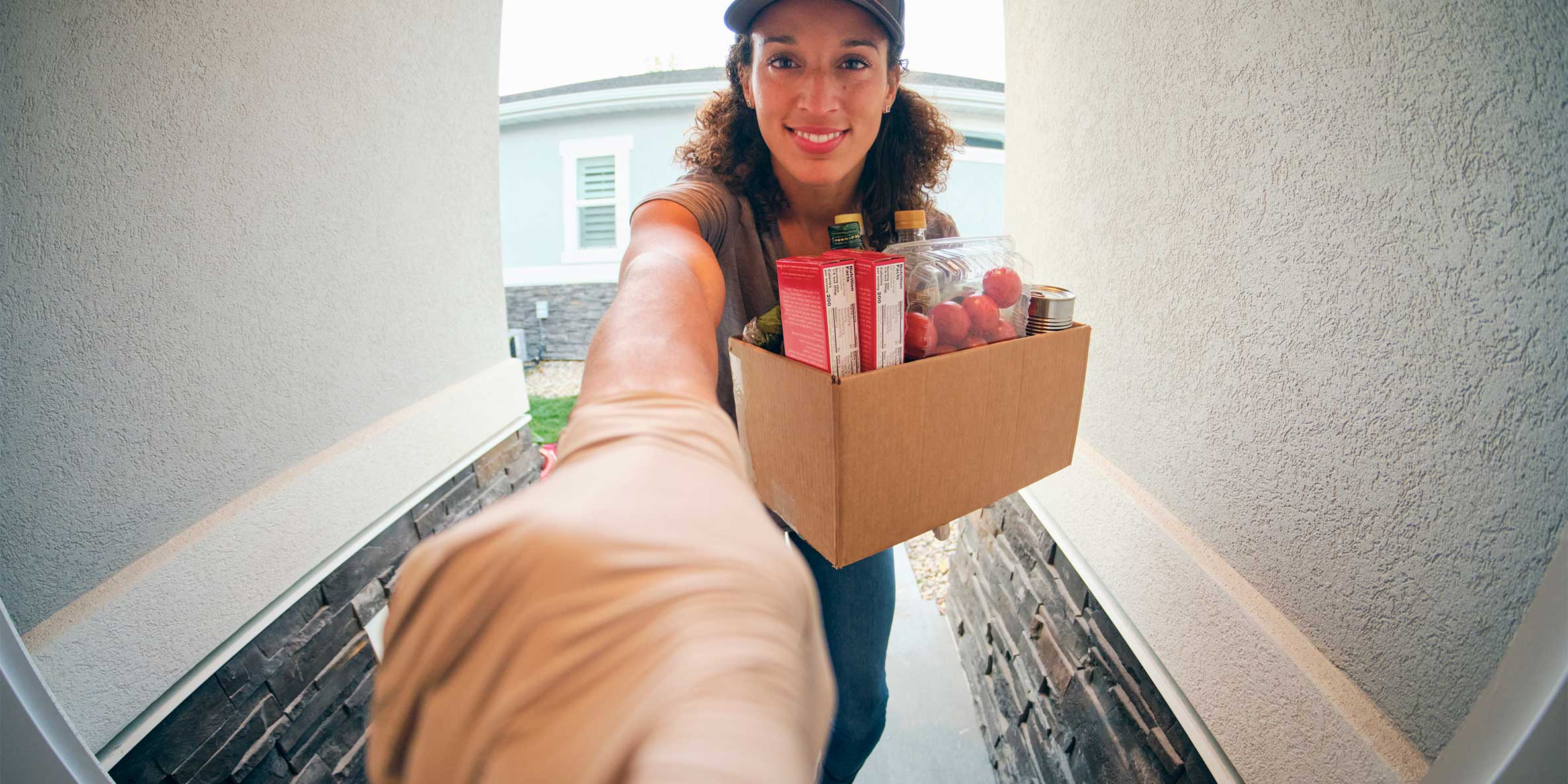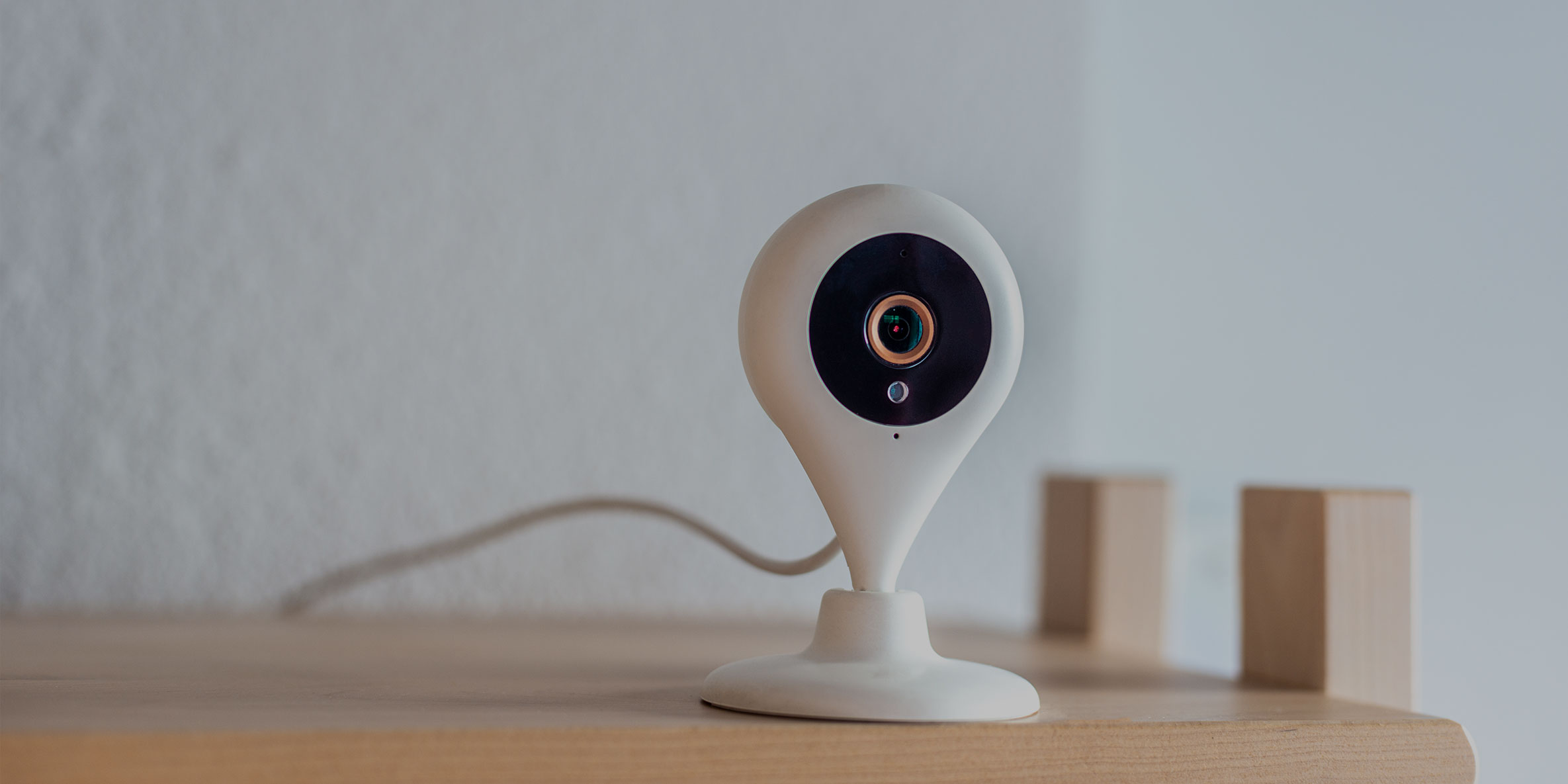Home Security Cameras: Your Guide to Finding the Right System
According to the latest FBI Uniform Crime Reporting Statistics, more than 800,000 home burglaries occurred in the U.S. during 2018.
Few experiences are more traumatizing for homeowners and their loved ones than returning home to find evidence of an intruder. A happy home can be tarnished by a lingering sense of violation, resulting in emotional costs that are hard to quantify.
There is also financial damage as a result of a burglary. According to the same report, the average dollar value of property taken during burglaries at residences was $8,407.
While burglaries in the U.S. are down compared to 2017, don’t consider the problem solved—there's still reason to be proactive about protecting your home.
One way to improve security is with a home security camera system.
In this guide, we explain why you should consider home security cameras, the benefits of having a video surveillance system and tips to select the right equipment for your home.
Click on the links below to easily navigate this guide.
How Do Cameras Keep Your Home Secure?
Cameras Provide More than Just Security
How to Select the Right Home Security Camera System
Install a Custom Security Camera System With a Professional
How Do Cameras Keep Your Home Secure?
Home security cameras are extremely effective solutions for protecting the ones you love. Below are four ways cameras keep you, your family and your valuables secure.
1. Home Security Cameras Deter Criminals
Cameras warn burglars that a security system is in place, acting as a deterrent to crime.
In most cases, thieves will case a home before they rob it, and if they spot cameras installed by a professional security provider, they will usually abort the burglary attempt.
According to a survey of 86 convicted burglars, many agreed security cameras worked as a deterrent. One burglar even advised homeowners to “get a camera and make it visible!”
While the sight of a security camera might be enough to deter criminals, it’s strongly recommended you do not use a decoy. They do not guarantee safety. Savvy burglars may be able to spot decoys, putting you and your loved ones at risk.
2. Cameras Keep You Connected to Your Home at All Times
One of the biggest benefits of having home security cameras is the ability to check in on your home when you’re not there.
Home security cameras with remote control capabilities keep you connected to your home at all times. Using your smartphone, tablet or laptop, set your home security cameras to send you updates every time movement is detected. Through a mobile app, you can customize specific notifications received, and choose notification preferences (i.e. on a set schedule, live as alerts happen or during specific times). For example, if your mornings are busy and you want to review during lunch, set your notifications to deliver at noon.
Take this attempted burglary that happened in Connecticut, as an example. A homeowner called the police and reported that two men were in his house. The man told dispatchers he was not in the home at the time, but was watching the two men burglarizing the house via a security system that had surveillance cameras inside his home.
3. Camera Footage Can Aid Police Investigations
In the unfortunate event a burglary does occur, your professionally installed security cameras will have recorded the incident in high-definition.
Police can use these videos and images to capture the culprit, prevent future crimes and return your items. For example, home security cameras helped Idaho police officers catch a thief after the incident was caught on their home’s doorbell camera.
Security camera footage can easily be managed and accessed through multiple devices. Footage can be recorded on a DVR or computer hard drive and watched from your tablet, laptop, TV or smartphone. From your smartphone, you can view surveillance footage or feeds while away from home, and receive video alerts when your motion-detection cameras record new clips.
4. Recordings Can Help Validate Insurance Claims
After a burglary, you’re required to make an insurance claim if vandalism or theft occurred. With your high-definition security footage, you can easily document the incident and validate your claim.
Also, some providers offer discounts on home insurance for having security cameras installed throughout a home.
Cameras Provide More than Just Security
Aside from keeping your home secure, cameras are also convenient. Below, we discuss some of the non-security advantages that come with a home camera system.
Integrate Cameras With Other Smart Home Security Technology
To get the most out of your surveillance system, integrate your cameras with other components in your smart home. Below are a few examples:
- Set cameras to activate the alarm every time they sense movement in specific areas. Integrate your home's outdoor smart lights, so that when a camera detects movement, your lights automatically turn on.
- Use your doorbell camera to verify who is on your doorstep before using your smart locks to allow them entry. (This can be particularly advantageous if you use in-home delivery services offered by companies like Amazon and Walmart.)
- Use your voice assistants to arm or disarm your cameras for added convenience.
Keep an Eye on What Matters Most
You can use cameras with remote capabilities to check in on your home at all times. Beyond the security benefits previously mentioned, there are many other times in which this could be helpful. For example, using a smartphone or other mobile device, you can:
- Make sure your kids got home safe from school.
- Keep an eye on your pets while you’re away.
- Monitor elderly family members when they’re home alone.
- Check in on regular visitors, such as babysitters or cleaning people.
- Know when packages are delivered to your doorstep.
- Keep a pulse on activity around your house—for instance, monitor a sleeping baby, kids playing in the backyard or teenagers in the basement while in another room.
- See who is ringing the doorbell before answering.
How to Select the Right Home Security Camera System
Now that we’ve explained the benefits of security cameras, here are some tips for selecting the right equipment for your home.
Assess Your Needs
To select the appropriate security camera system, homeowners must assess the unique needs of their property. The most suitable surveillance system is dependent on several factors, including:
- The layout of your home.
- The number of entry points.
- The size of your home.
- The value of your assets.
- Your system budget.
- City and crime rate.
- Who resides in your home (kids, pets, seniors, etc.).
Use this information to determine what types of cameras are required and the number of cameras necessary to provide optimal coverage. For example, if you have a large home with numerous entry points, then you may need several wide-angle cameras to monitor bigger areas. Or if you have pets or small children, you’ll want to mount cameras in high spaces. That way, you aren’t receiving alerts every time one of your kids or pets triggers camera motion sensors.
Consider All Camera Options

Security cameras come in a variety of sizes and serve different purposes. Standard cameras include:
- Bullet. These cameras are long, cylindrical and ideal for outdoor use and long-distance viewing. Installed within protective casings, the cameras are shielded against dust, dirt and other natural elements. The cameras can easily be mounted with a mounting bracket, and come fitted with either fixed or varifocal lenses depending on the requirements of the intended application.
- Dome. These ceiling cameras are covered with tinted glass. The shape of the camera makes it difficult for onlookers to tell which way the camera is facing, which deters criminals by creating an air of uncertainty.
- Video doorbell cameras. These cameras have become a popular option among homeowners because they are extremely convenient and secure. With video doorbell cameras, users can see and talk to whoever is at their door, even when they’re not home. They can also set motion-activated triggers and have alerts sent directly to them whenever activity is detected. While doorbell cameras are suitable for all homeowners, they are especially advantageous for those who are often home alone, because they allow you to see who is at your door before you answer.
- Pan-Tilt-Zoom. These are remote-controlled cameras with panoramic capabilities for a wide-angle view from a single unit. These cameras are widely used in large areas, like backyards, detached garages, front porches, fenced front yards and driveways because of their ability to rotate horizontally and vertically to cover large areas. They are also great for live monitoring since they can be controlled to face any direction.
- Wired. The most traditional types of security cameras, wired cameras are connected directly to a video recorder and require a connected power source. Depending on the recorder you select, you may be able to access video footage remotely.
- Wire-free. Wire-free cameras don’t require a connected power source or video recorder since they operate on batteries and store footage on the cloud. While this makes them easy to install, it also means you’ll need to replace batteries regularly.
- Wireless. Sometimes referred to as wireless IP cameras, these cameras collect and stream data over your wireless network, allowing you to view video footage remotely. Wireless cameras aren’t necessarily wire-free; the name refers to working over your home’s Wi-Fi.
Select cameras that are designed to function in specific locations. For example, outdoor cameras have coverings to protect from natural elements, while other cameras are designed strictly for indoor use.
Enhance Safety with Additional Camera Features
When purchasing equipment, consider these additional features that improve functionality and further enhance security
- Adjustable. Cameras that are mobile and can tilt or zoom for multiple views.
- Day/night capabilities. Cameras with night vision use infrared LEDs to provide clear images, even in the dark.
- High resolution. Higher resolution cameras give the best quality image.
- IP-based versus wired. Video cables are not required with IP-based systems.
- Weatherproof. Cameras that can withstand outdoor conditions.
- Remote access. Sync your video surveillance system to your mobile security app to control settings and view footage anytime, anywhere on your mobile device.
Having a clear understanding of your family’s needs will ensure you install a system best fit for your home.
Strategically Place Cameras
Properly placed cameras help homeowners easily identify and promptly respond to potentially hazardous situations that occur while they are away. To maximize security with cameras, focus on these common entry points:
- Front and back doors. According to the International Association of Certified Home Inspectors, 34 percent of burglars enter through the front door and 22 percent through the back door. Also, remember to place cameras above all entrances and exits to other structures on your property, like garages or sheds.
- Back windows. Entering through a window facing away from the street decreases a burglar’s chance to be seen by neighbors or bystanders.
- Basement stairs. If your basement has an outdoor entrance or hatch, it is essential to place a camera focusing in this direction.
- Side gate: Sneaking in through a backyard gate gives intruders the opportunity to hide behind furniture, toys and other recreational equipment.
Strategically placing cameras in your home is essential, so work with a security provider when selecting areas for installation. If an area seems more vulnerable than other parts of your home, consider adding a camera for extra security.
Customize Camera Alerts
Many home security cameras are designed to send you alerts whenever activity is detected.
However, if cameras are outdoors or if you have a pet or small children, you will need to customize your camera settings to prevent false alarms.
Why?
Spiders and other bugs tend to set off outdoor cameras, while pets or children can trigger indoor cameras mounted at lower levels. To prevent false alarms, adjust the sensitivity of the motion sensors to find the ideal setting for your home.
Secure All Connected Cameras
Most of today’s video surveillance cameras connect to the Internet, so cyber security is imperative.
Many homeowners have reported instances of cyber criminals hacking home security cameras and accessing feeds. One Illinois family said a hacker compromised their home security camera and spoke to their baby before yelling vulgarities at the couple.
Prevent hackers from accessing your home security cameras with these cyber security safeguards:
- Do not share passwords unless it's necessary. Keep password sharing on a need-to-know basis, and don’t write passwords down. Consider implementing a secondary network for guests. That way your important data and documents are safe on a seperate connection in the event a guest compromises your network.
- Encrypt networks where cameras are hosted. This will make it difficult for hackers to obtain or “read” data if systems are hacked.
- Never leave factory-setting passwords. These passwords are often easy to find online, which means hackers can gain access to your systems. According to the research team at Kaspersky, there are 20,000 attacks on smart devices every 15 minutes.
- Secure your Wi-Fi. Give your router a unique name and password. Set your router settings to WPA2 (preferred) or WPA for stronger security. Additionally, do not connect cameras to unfamiliar, unsecure networks.
- Stay informed on product updates and system upgrades. If cameras are outdated, it’s possible for hackers to exploit vulnerabilities that may have been patched in new updates.
Install a Custom Security Camera System With a Professional
At Vector Security, we’ll design and install a home security camera system that will fit your lifestyle and budget, while helping you keep an eye on all areas of your property. You’ll know who is in and around your home at all times. And you’ll also receive alerts from the Vector Security Home Automation App when incidents or activity occurs.
Contact one of trusted security experts today to learn how you can get started with a home security camera system.



